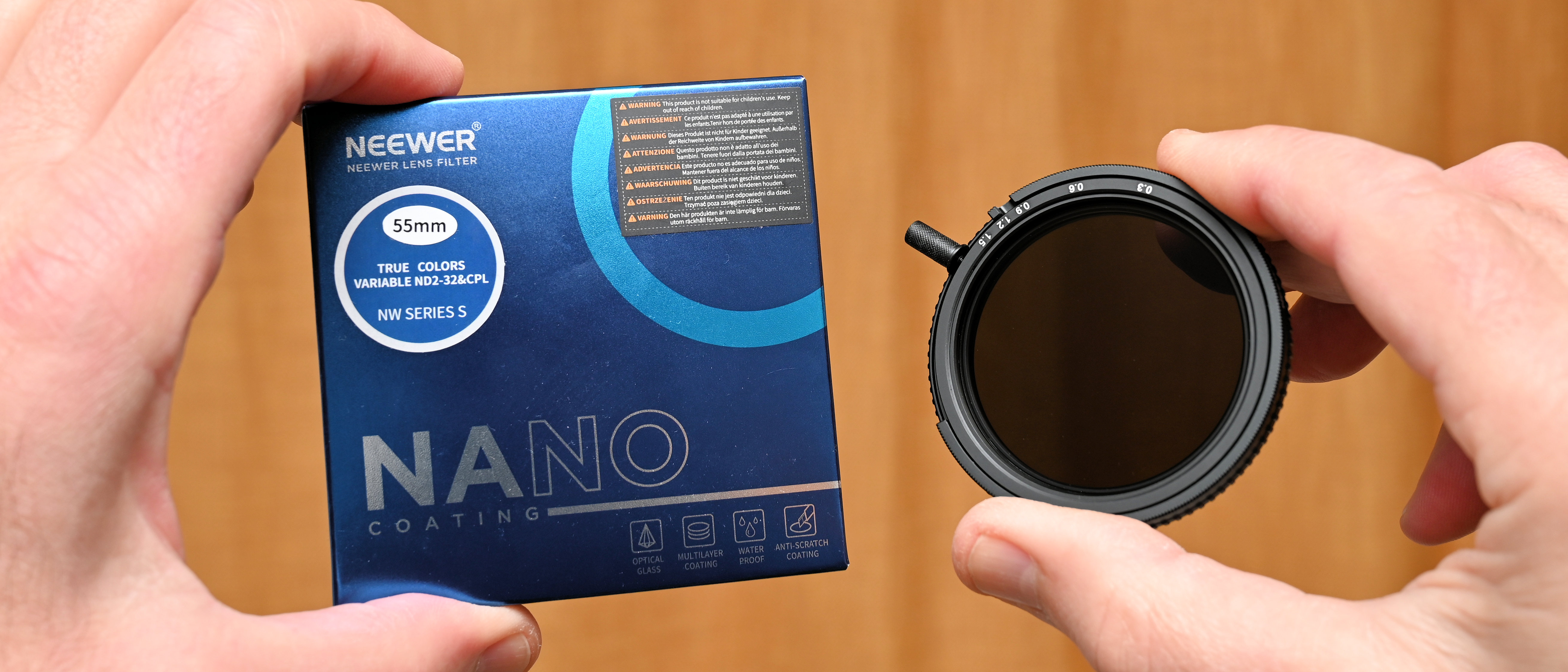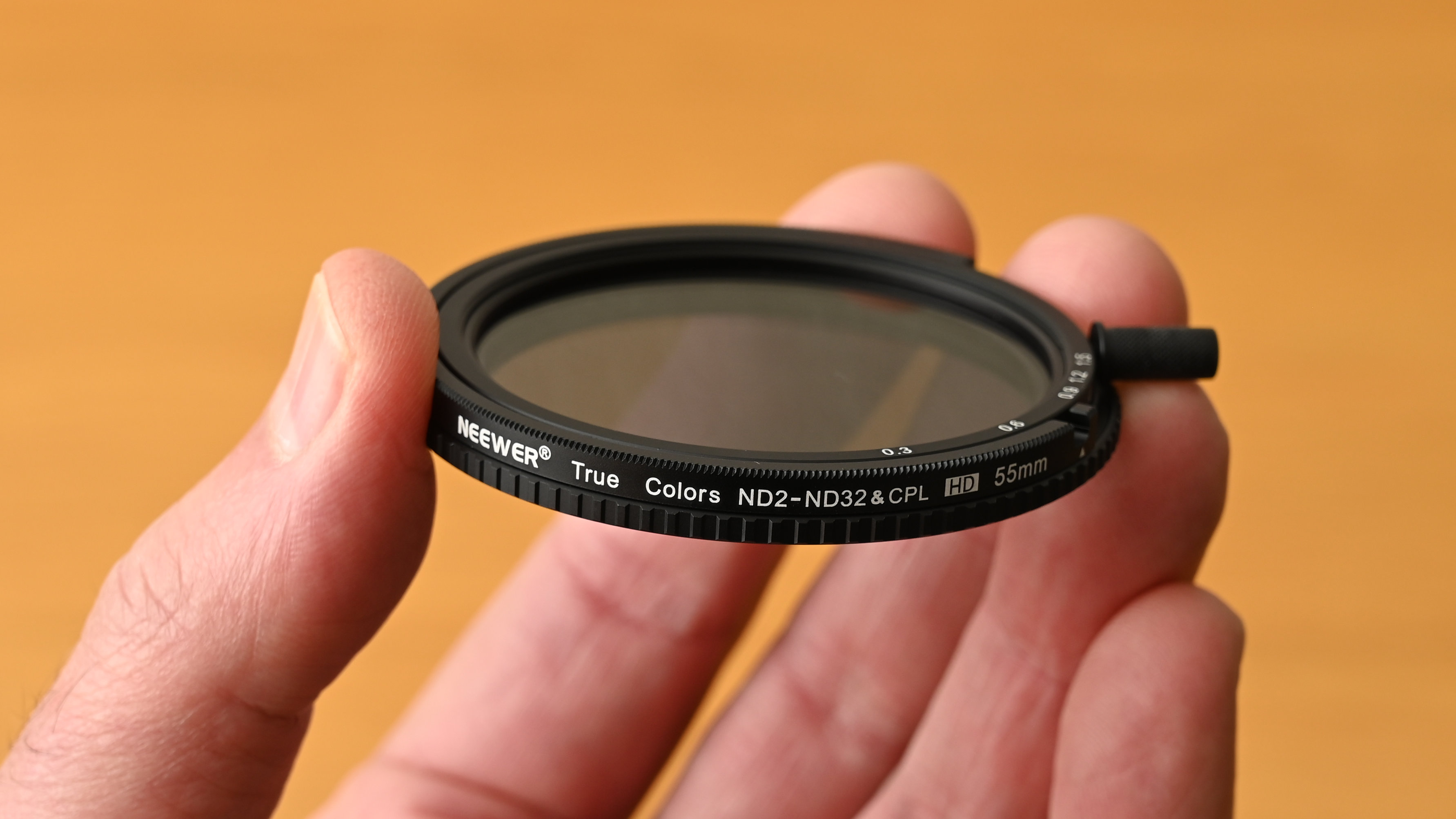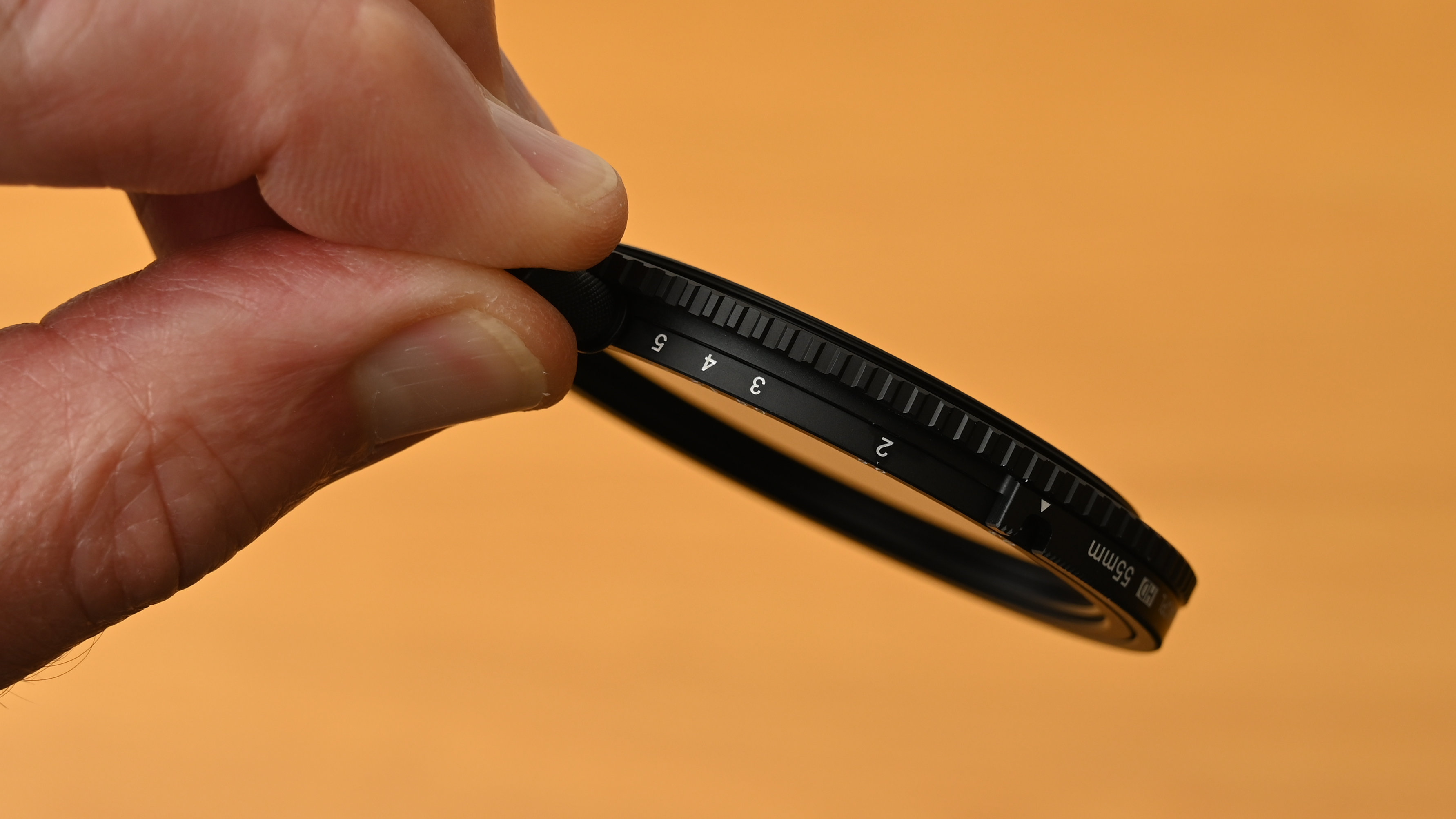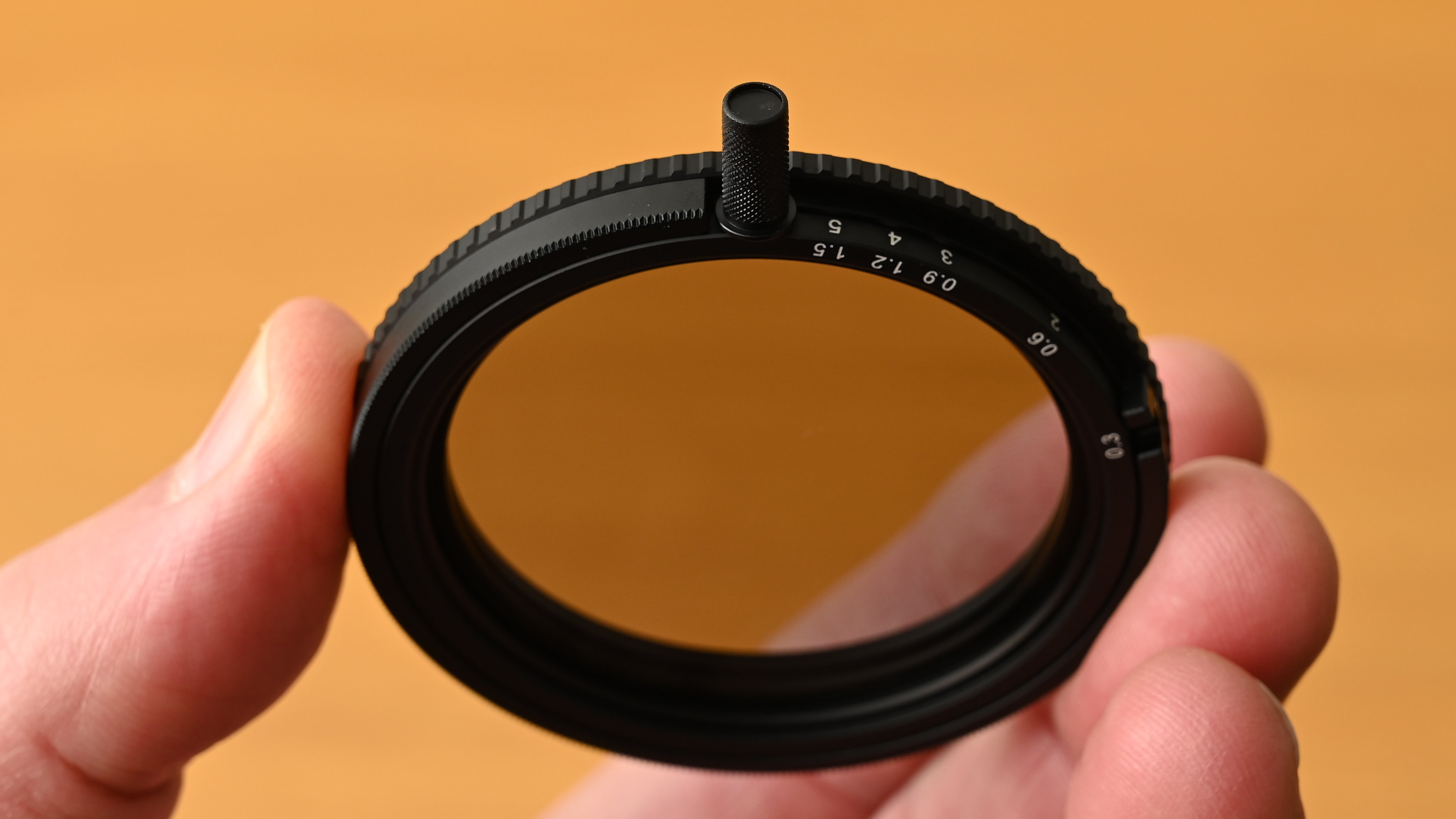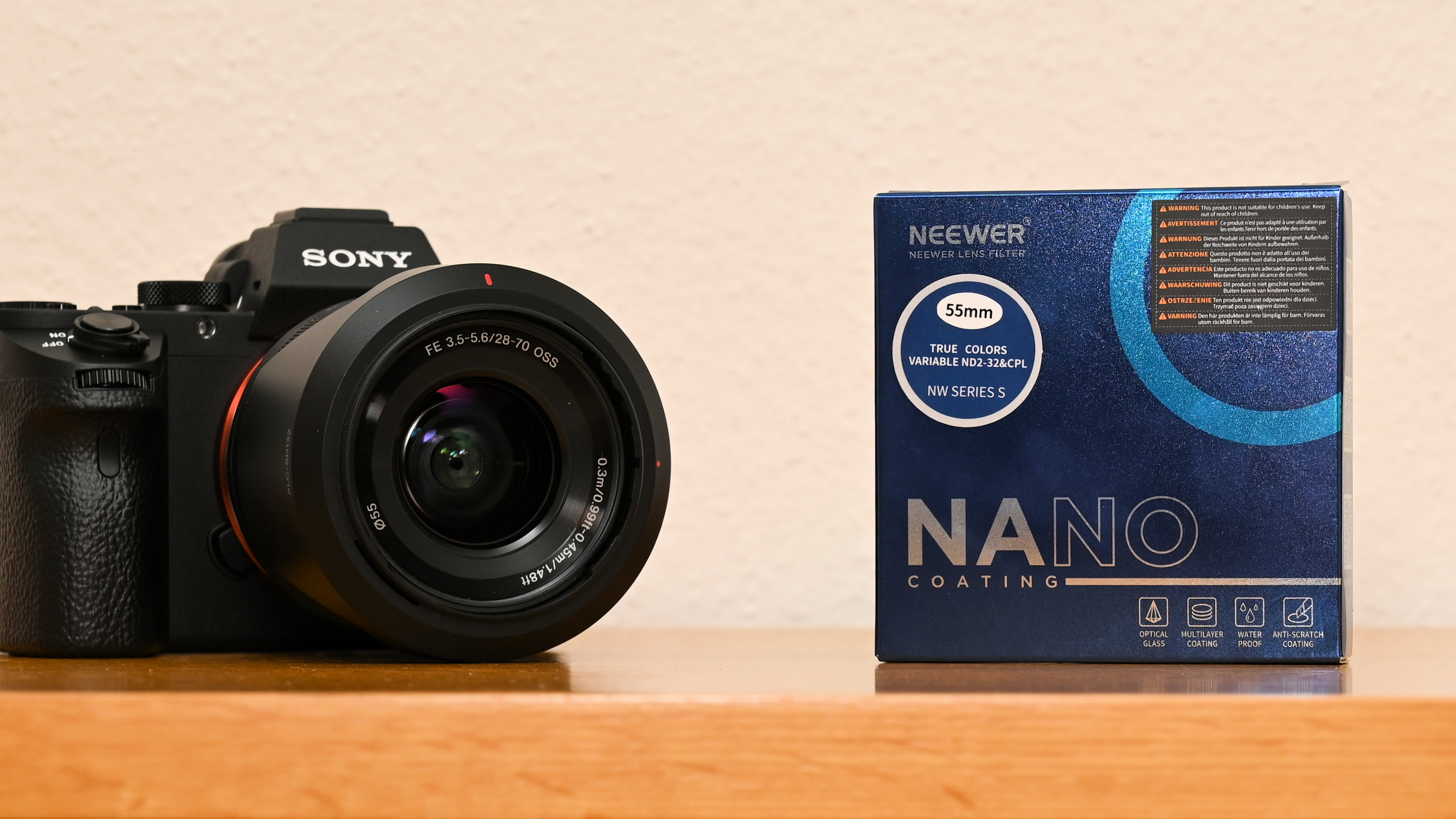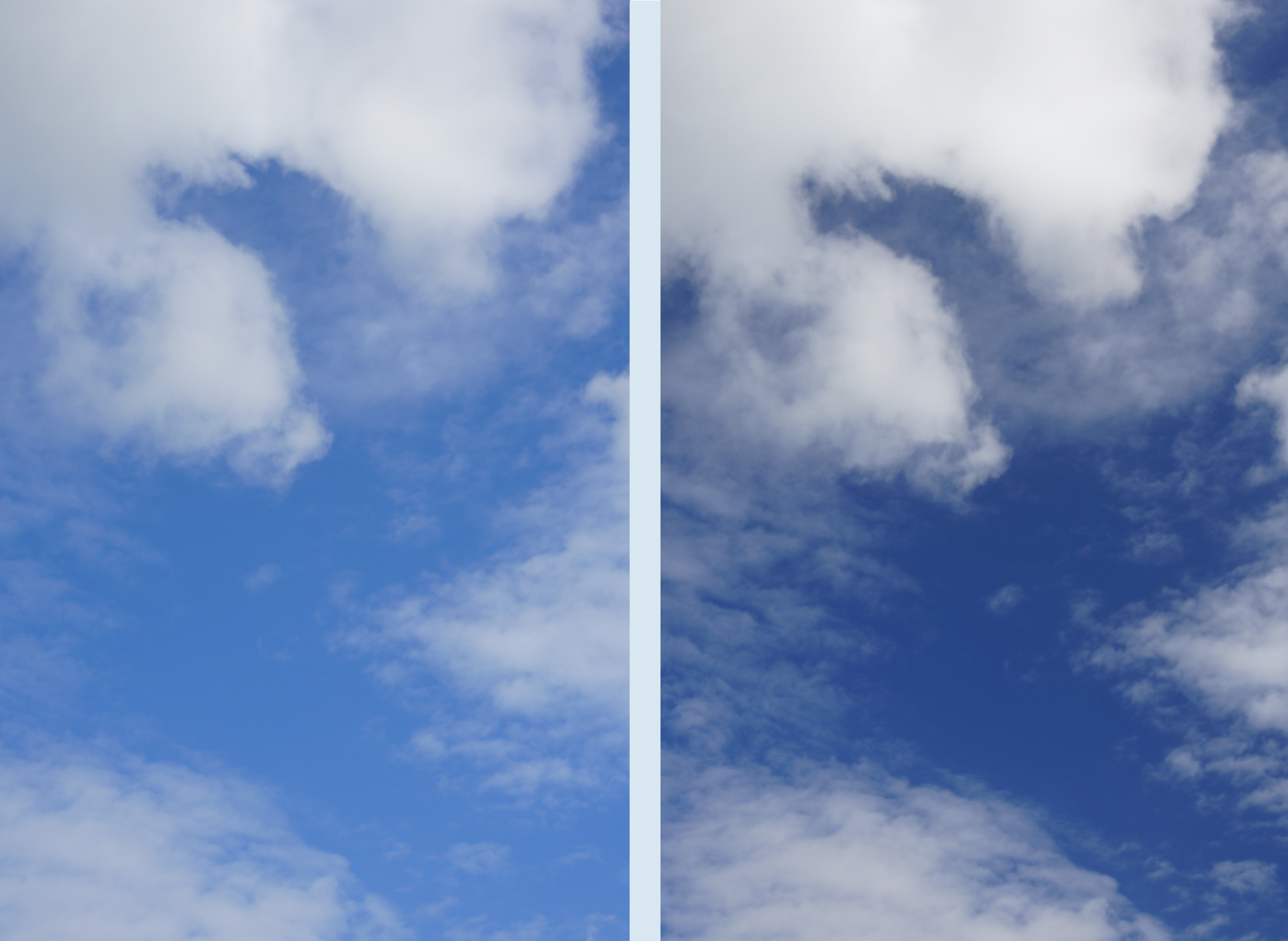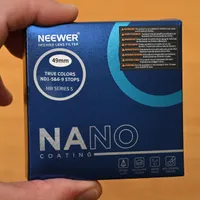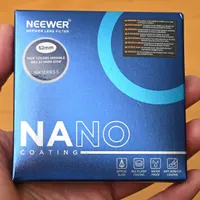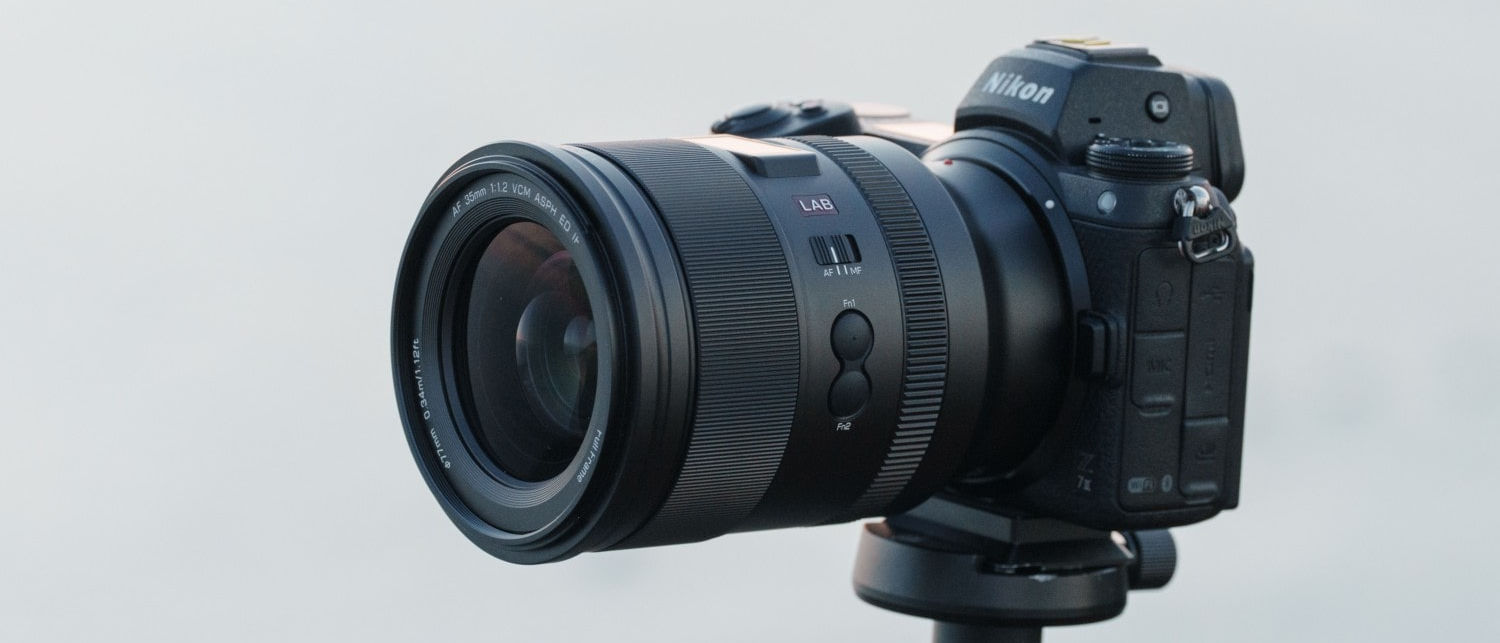Digital Camera World Verdict
I like that the Neewer 2 in 1 True Colors Variable ND2-ND32 & CPL Filter makes a good stab at delivering two-fold advantages. It’s a variable neutral density filter as well as a circular polarizing filter, all wrapped up in a single package. It works well to a point, but I’d like more light-stopping power on tap.
Pros
- +
2 filters in 1
- +
Nicely engineered
- +
Strong performance
Cons
- -
Incompatible with lens hoods
- -
Limited light-stopping power
Why you can trust Digital Camera World
Neewer has come a very long way from being one of those obscure Chinese photographic brands, since it launched back in 2011. The company makes everything from all sorts of studio and location lighting kits, including some of the best LED light panels on a tight budget, to camera batteries, grips, tripods, bags, cases and plenty more besides. There’s also an extensive range of photographic filters in various line-ups, aiming to be among the best and most cost-effective on the market. The 2-in1 filter I’m reviewing here sets out to be one of the best circular polarizing filters and one of the best variable neutral density filters, in one convenient package.
Neewer True Colors Filter: Specifications
Filter type | Variable ND + CPL |
Size range (mm) | 37, 43, 46, 49, 52, 55, 58, 62, 67, 72, 77, 82 |
Frame material | Aluminum |
Filter material | HD optical glass |
Coating layers | Nano, multi-layer, anti-scratch, fluorine |
Transmittance | 1-5 stops |
ND filter factor | 2-32 + CPL |
Neewer True Colors Filter: Price
The Neewer 2 in 1 True Colors Variable ND2-ND32 & CPL Filter comes in no less than 12 different sizes, catering to lenses with screw-in filter attachment threads of anything from a relatively tiny 37mm up to a maximum of 82mm. Prices vary accordingly, starting at $50 / £63 / AU$70 for the 37mm option up to $75 / £95 / AU$108 for the largest 82mm edition. I’d say the prices are very reasonable for just a circular polarizer or just a variable ND filter, and are great value for a 2-in-1 kit.
Neewer True Colors Filter: Design & Handling
There are plenty of variable neutral density filters on the market, and even more choice when it comes to circular polarizers, The neat thing about this Neewer is that it combines both types of filter in one handy screw-in package.
Let’s start with the variable neutral density or ‘VND’ side of the equation. Some examples of the breed offer a relatively huge range of adjustment, going from very little reduction in light transmittance right up to massive stopping power. And all this is available from just rotating the filter, so that the dual polarized elements are increasingly at odds with each other. However, they often come with an inherent problem. If you’re too ambitious with the amount of light reduction that you dial in, you end up with an unsightly X-shaped dark cross that stretches across your image and ruins the result.
The VND section of this filter is rather more modest in its aspirations. As such, it has an operating range of 1-stop to 5-stops, or ND2 to ND32 if you prefer. Typically, adjustment through the VND range is made by rotating the business section of the filter via a protruding handle or knob. As we’ll see in a moment, this handle serves two purposes but, for now, let’s just say that it has hard stops for the minimum and maximum amount of variable density. That’s good new in avoiding the dreaded X-shaped cross polarization effect but if you’re after really big stopping power, for example to enable long exposures on a sunny day, it won’t go far enough.
Sure, the 1-stop to 5-stop range can be ideal for enabling the use wide apertures under bright lighting conditions, when you’re after a tight depth of field. It’s also great for maintaining consistent shutter speeds and apertures when shooting video under changing lighting conditions. However, the maximum density is unlikely to be sufficient for enabling long exposures under bright lighting conditions, for example if you want to turn choppy watery surfaces like weirs and rapids into a smoothed-over effect. Ultimately, if the slowest shutter speed you achieve under bright sunlight is 1/60th of a second, a 5-stop density will only take you down to an exposure time of ½ a second. Even so, it can still come in useful for enabling long exposures in low lighting conditions, for example if you want to turn traffic into light trails at twilight. A 1-second exposure with no filter will be transformed into a 30-second exposure at the maximum ND32 setting.
Let’s turn our attention to the other half of the package – the circular polarizer or ‘CPL’ filter. In the time-honored tradition, this enables you to polarize the light that reaches the lens, and therefore to the camera’s image sensor behind it. Typical advantages include adding contrast, saturation and drama to cloudy blue skies, and for reducing unwanted reflections. Not only can you reduce reflections in the likes of windows, ponds and lakes, but cutting down the reflectivity in the assorted components of a landscape scene can make it look much more vivid, vibrant and saturated.
The best camera deals, reviews, product advice, and unmissable photography news, direct to your inbox!
As with any circular polarizer, the one in this dual-action Neewer affair is based on you rotating the filter to increase or reduce the effect. But hang on, we’ve already been using the handle for altering the rotation of the variable neutral density element. Here’s the clever bit. If you tighten the handle by screwing it fully in, it rotates the necessary element for circular polarization. Loosen the handle by unscrewing it, and it adjusts the variable neutral density. It’s a genuinely dual-mode handle.
The net result is that you get both circular polarization and variable neutral density effects with a ‘single’ filter attached to your lens. Moreover, you can use them independently of each other, or combine the effect of both if, for example if you want to blur the appearance of a waterfall while also cutting the reflections in the pool of water at its base.
As I’ve come to expect from Neewer, the build quality of the filter feels very good, taking the budget-friendly price tag into account. The casing is made from a lightweight aluminum frame which is anodized in matte black, including on the inner surfaces to avoid unwanted reflections. Precision-engineered knurling is applied by CNC (Computer Numerical Control) to aid easy fitment and removal from the camera lens.
The actual filter material is quoted as being ‘HD optical glass’ and comes complete with 30 layers of nano-structure coatings. These include multi-layer anti-reflection coatings, anti-scratch coatings and fluorine coatings to repel water and greasy fingermarks, all applied to both sides of the filter. As with other filters in the range, it’s supplied complete with a protective hard case and a microfiber cleaning cloth.
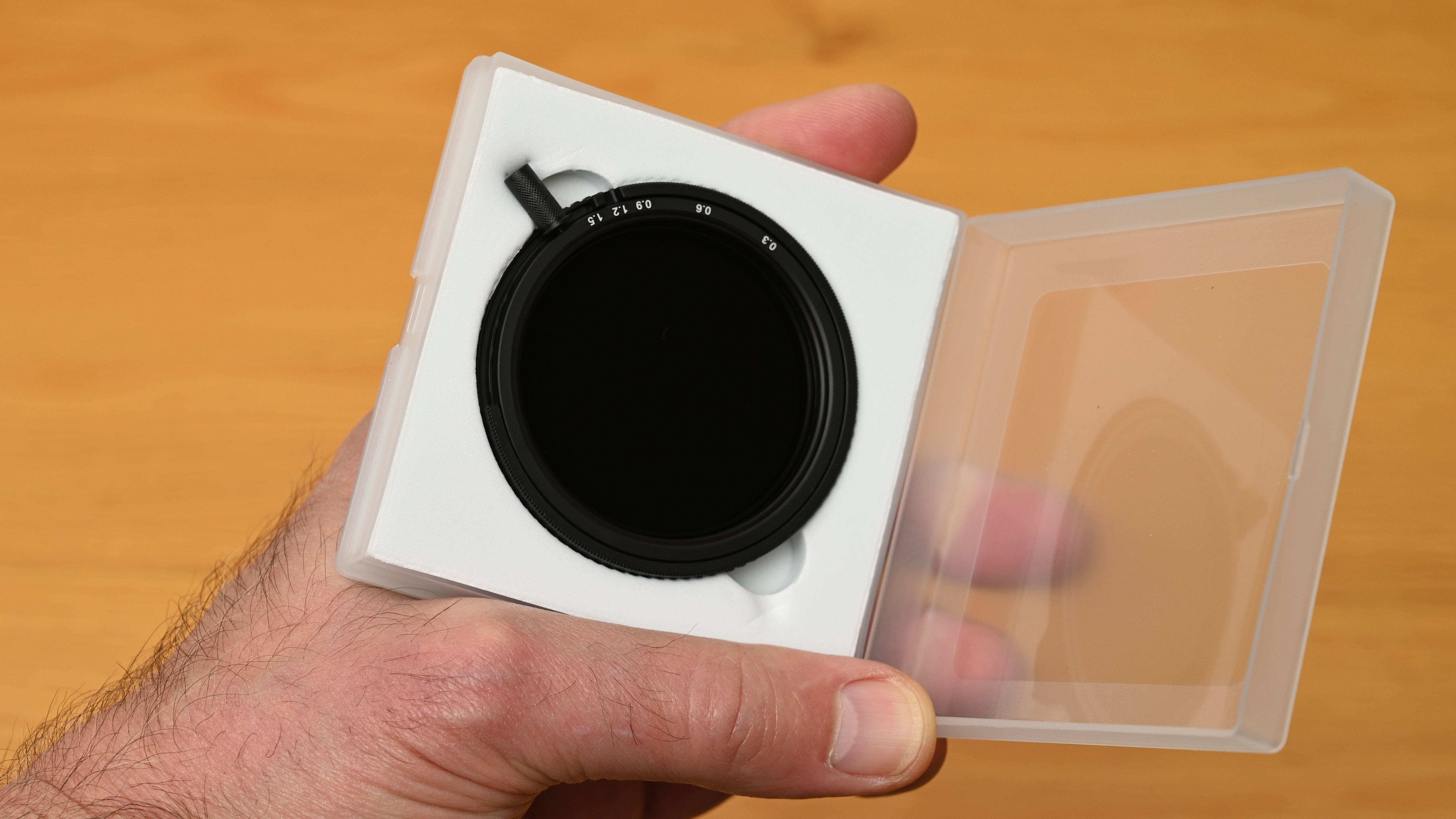
Neewer True Colors Filter: Performance
Having more than one element in the filter brings the risk of a degradation in image quality, with a loss of sharpness, clarity, contrast. There’s also the potential problem of light being reflected back and forth between the separate elements, increasing ghosting and flare. It’s more of an issue than you might think, because the operating handle of the filter precludes the use of a lens hood, which would otherwise cut down the light entering the lens from an acute angle.
I started off by testing the circular polarizing side of the equation on its own. Any circular polarizer gives some amount of reduction in light transmission but this one more than most, as it’s piggybacked on a VND filter with a minimum of a 1-stop reduction. Even so, I found the circular polarizer easy to use and highly effective in reducing reflections and adding drama to blue skies.
Next I tried the variable neutral density filter with and without additional circular polarization. The pair of images below demonstrates how much light-stopping power you get with the VND filter at its minimum setting and minimal circular polarization, and with the VND and CPL both set to maximum.
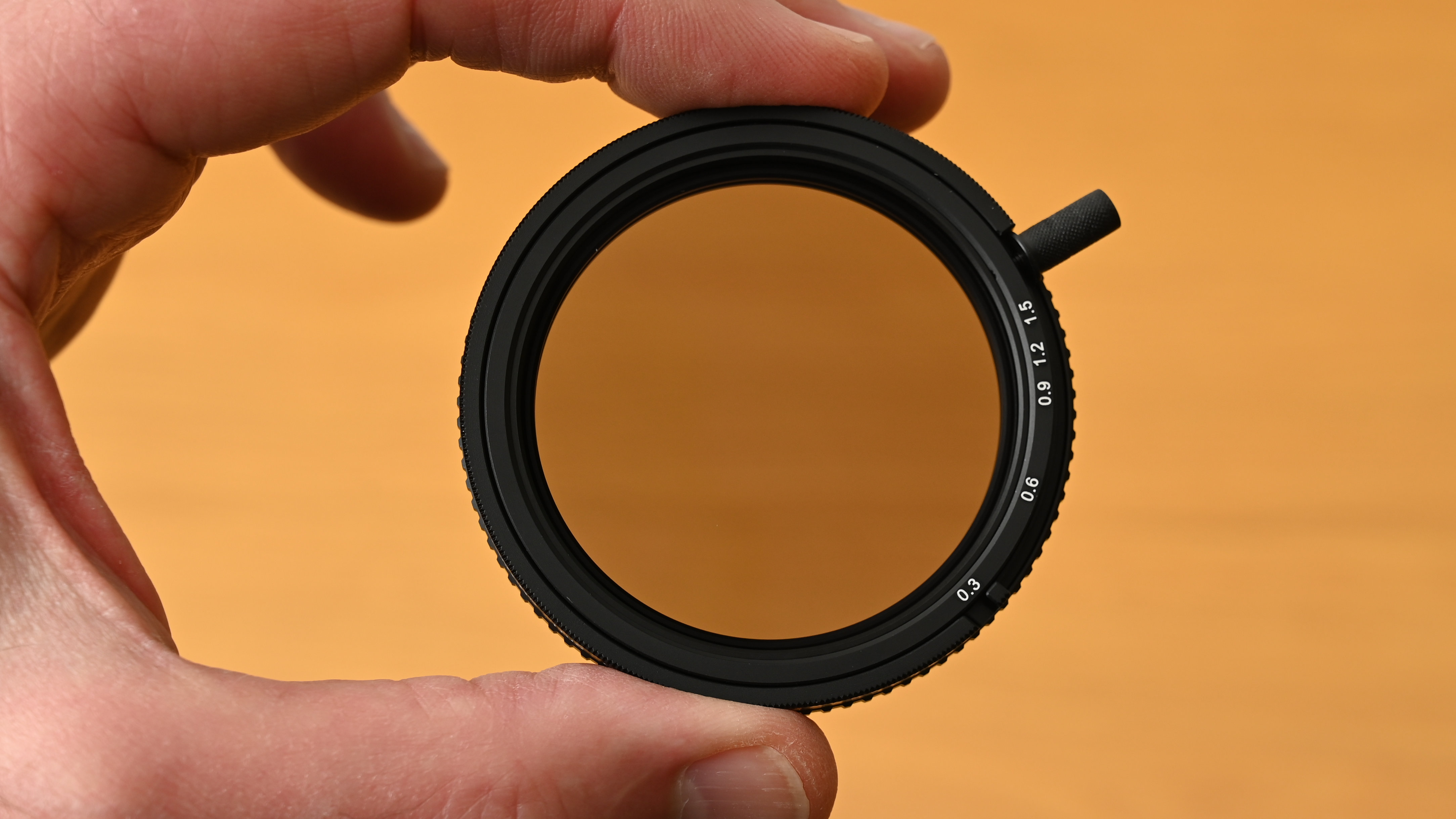
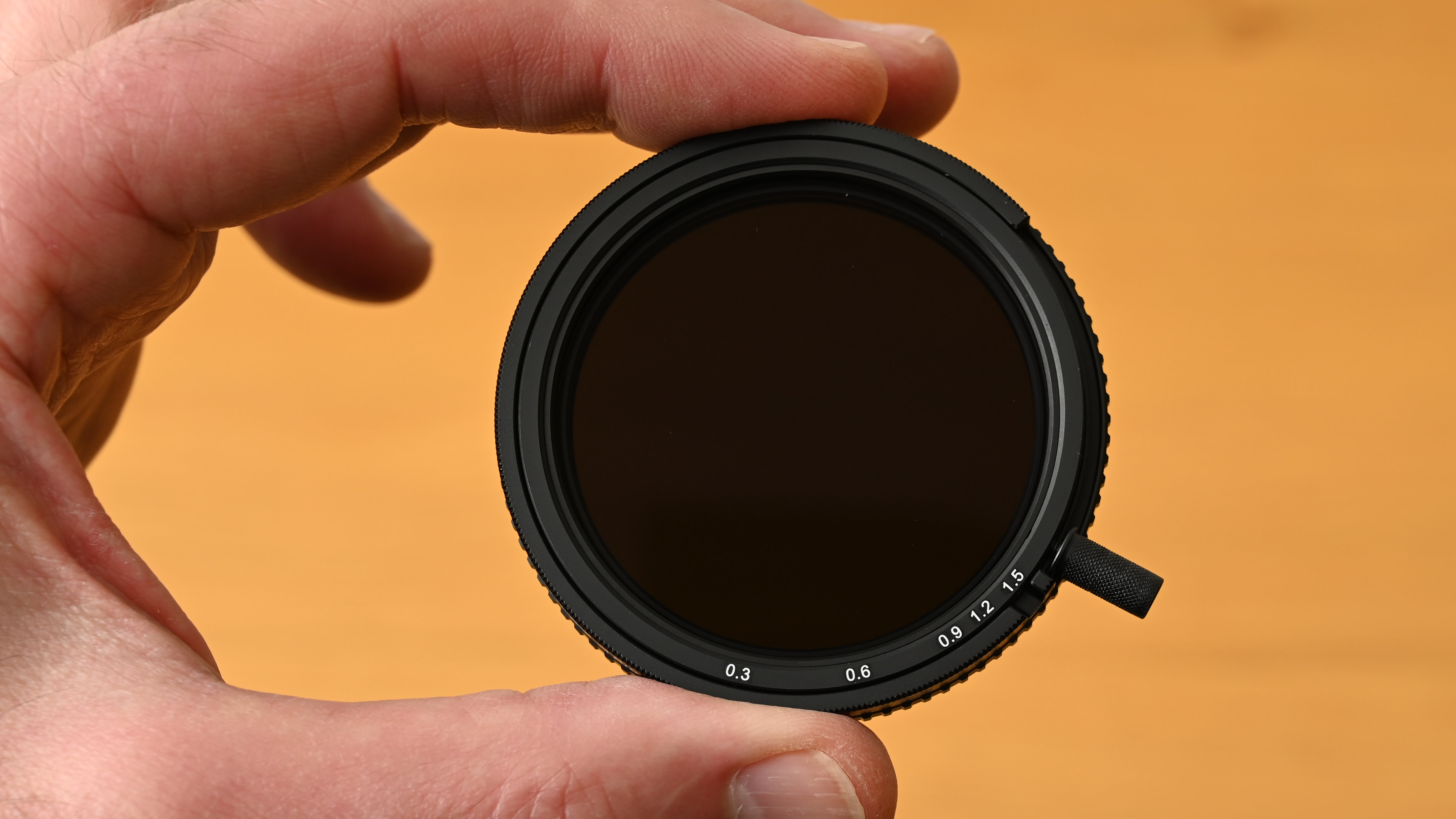
The following gallery of example shots is of Pulteney Bridge weir in the UK city of Bath. In the first shot, no filter is attached to the lens. Successive shots show the effect of adding circular polarization and minimum neutral density, progressing through to maximum use of both filters. Even at maximum light-stopping power, there’s not really enough reduction in shutter speed to tame the waters of the weir.
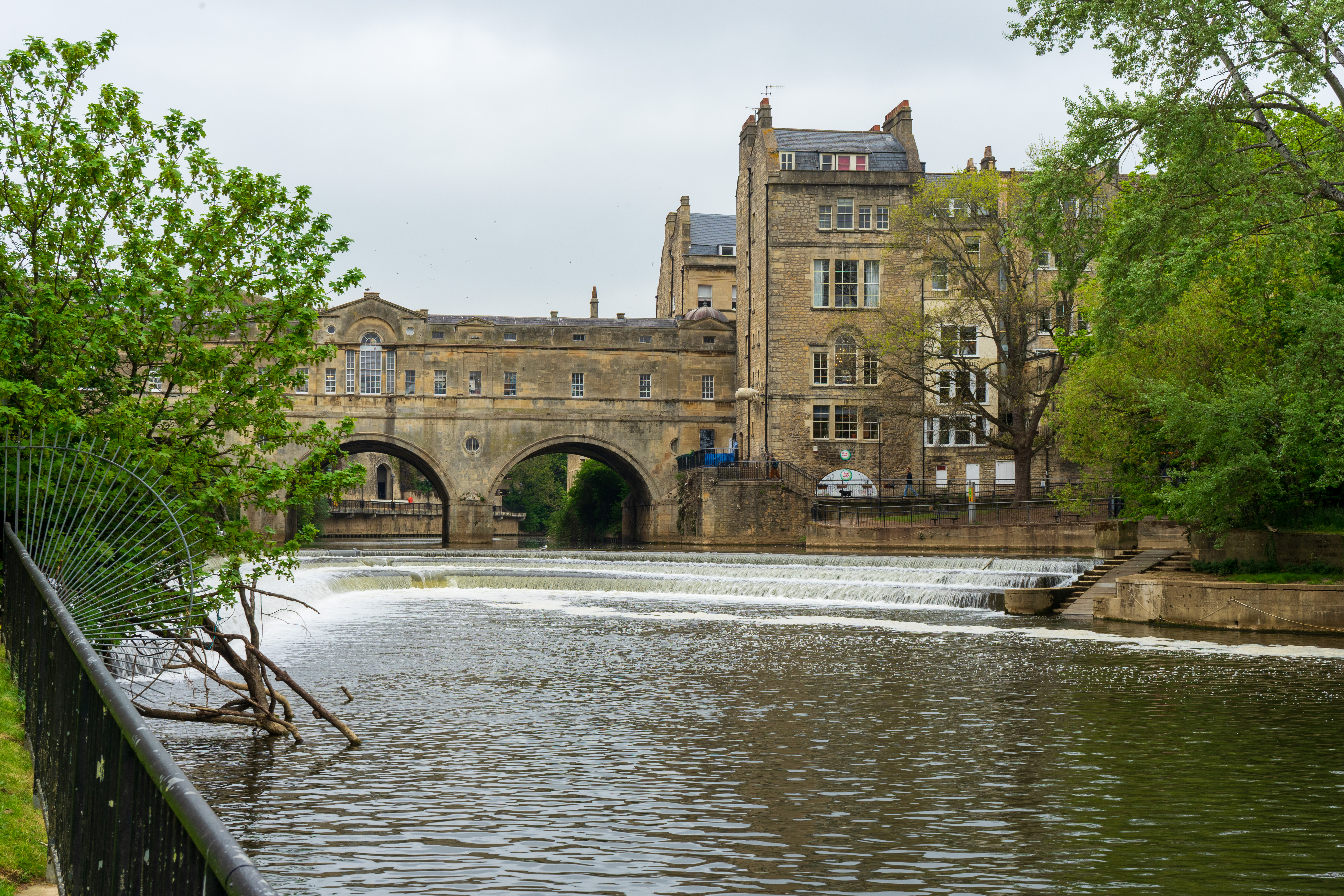
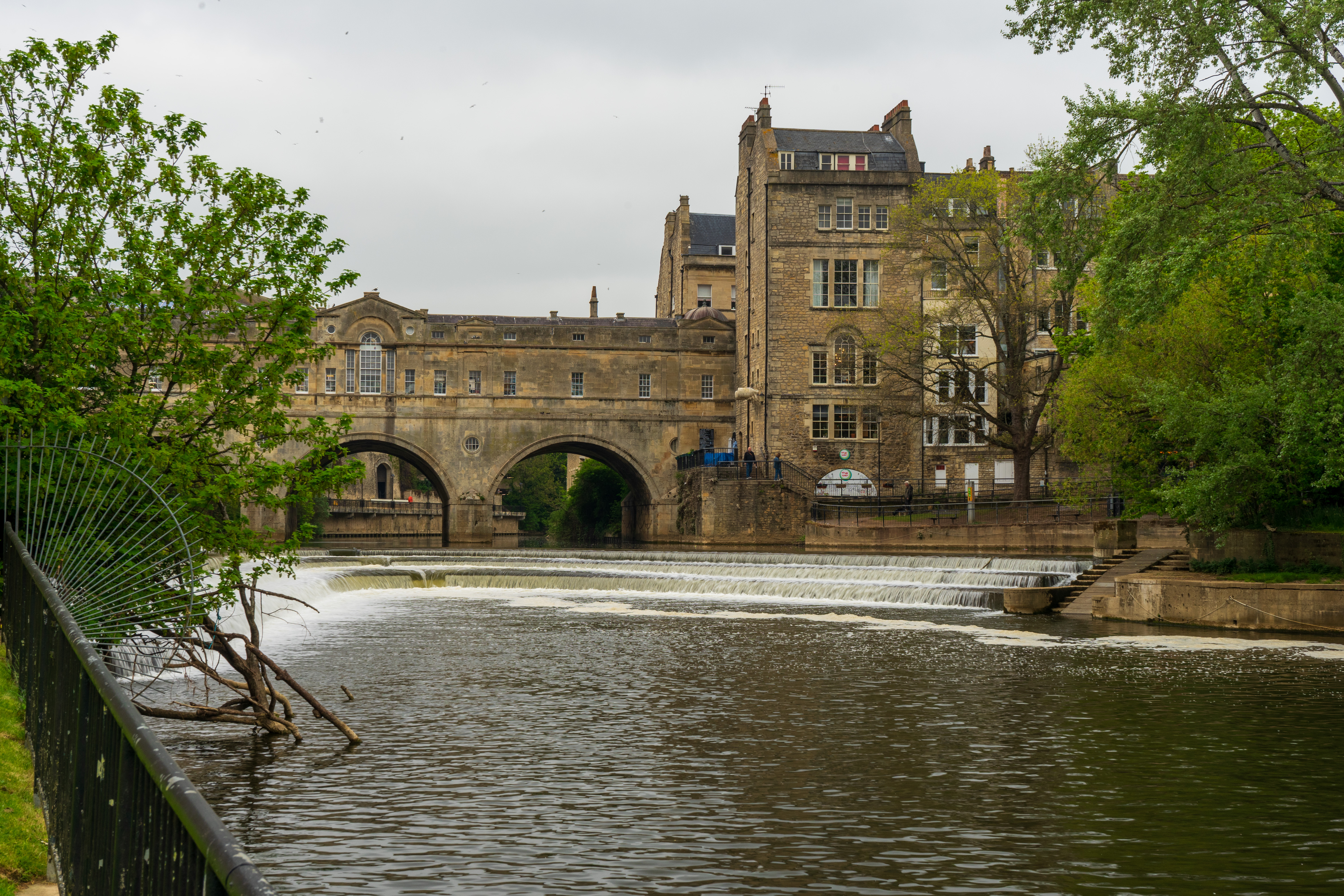
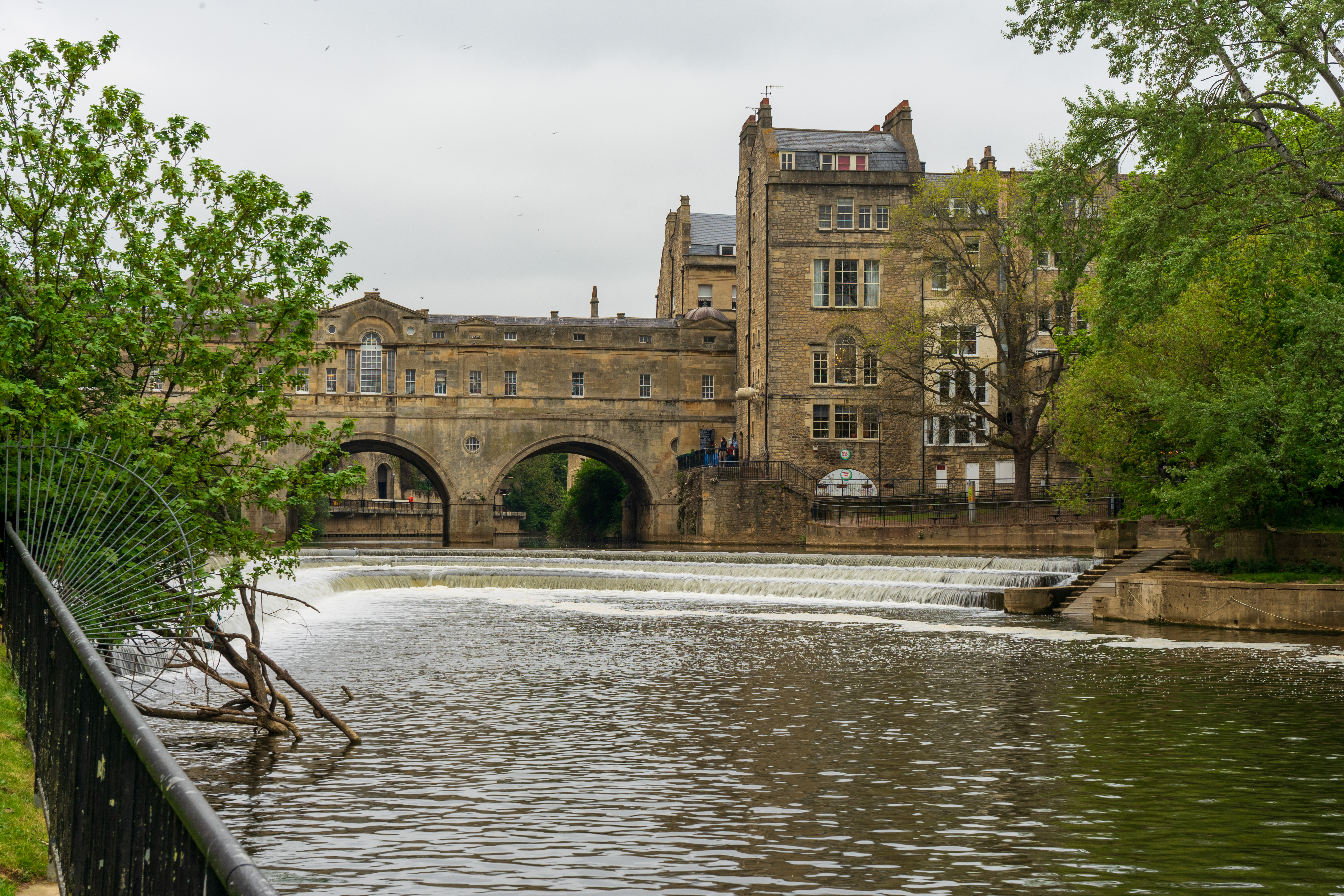
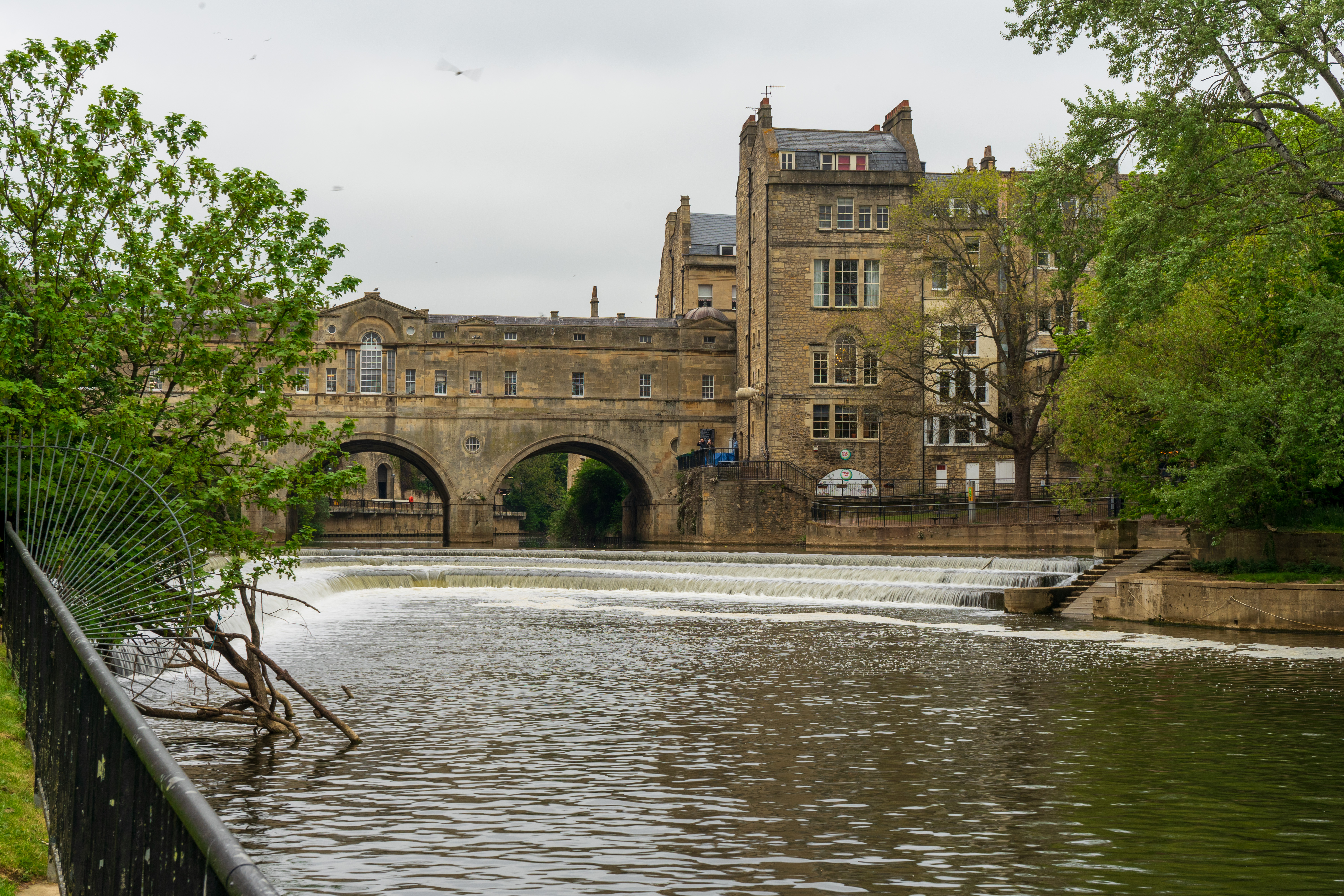
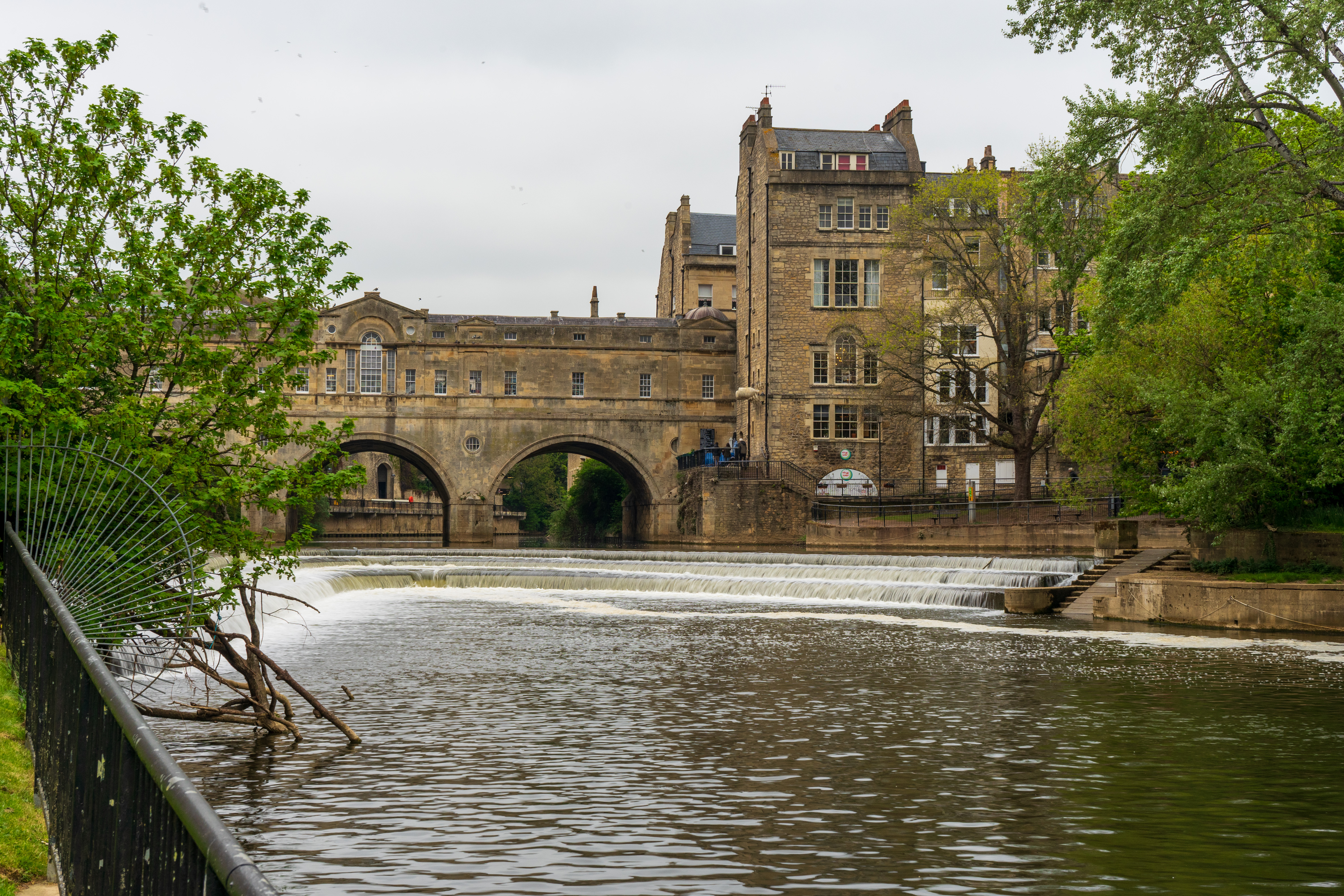
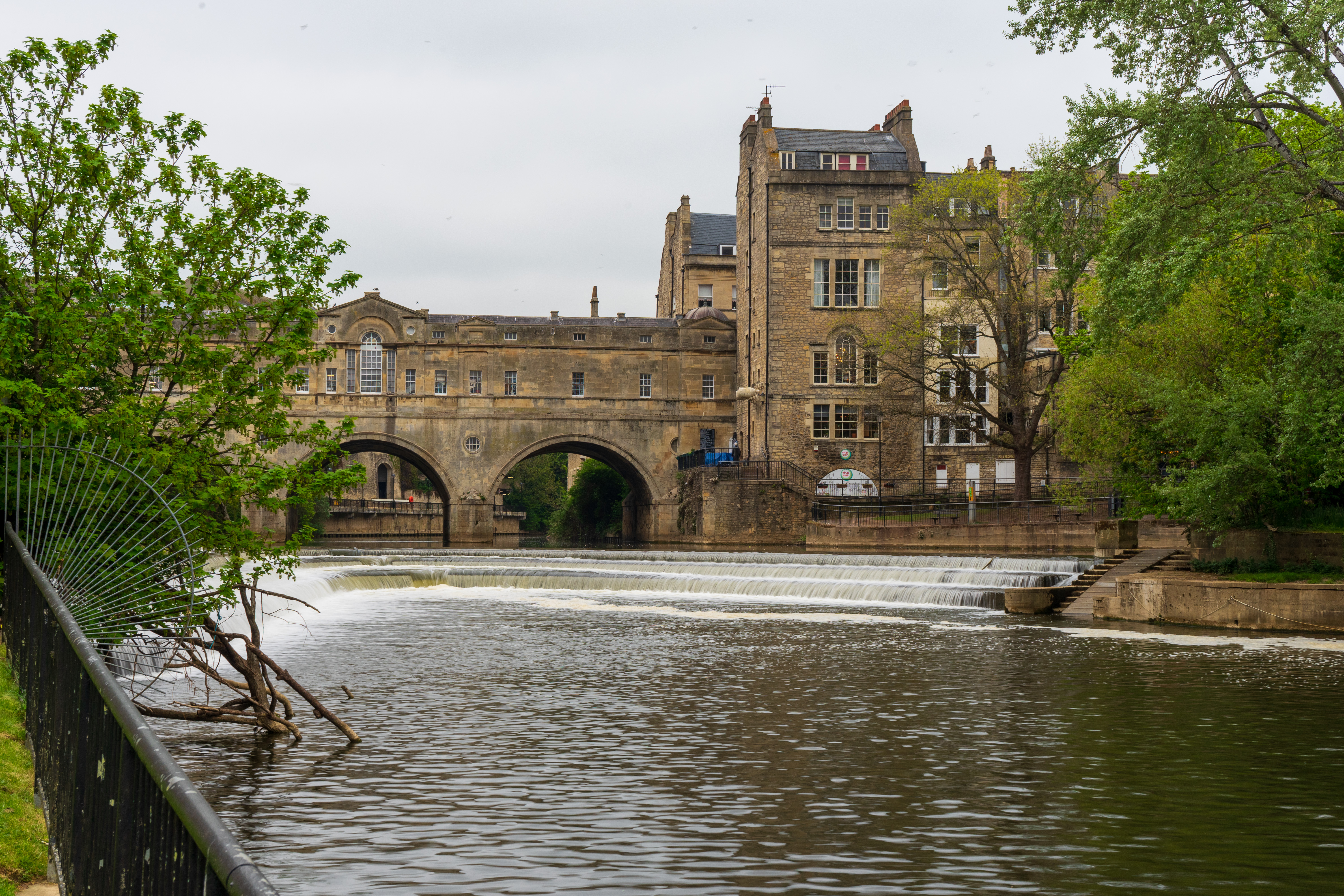
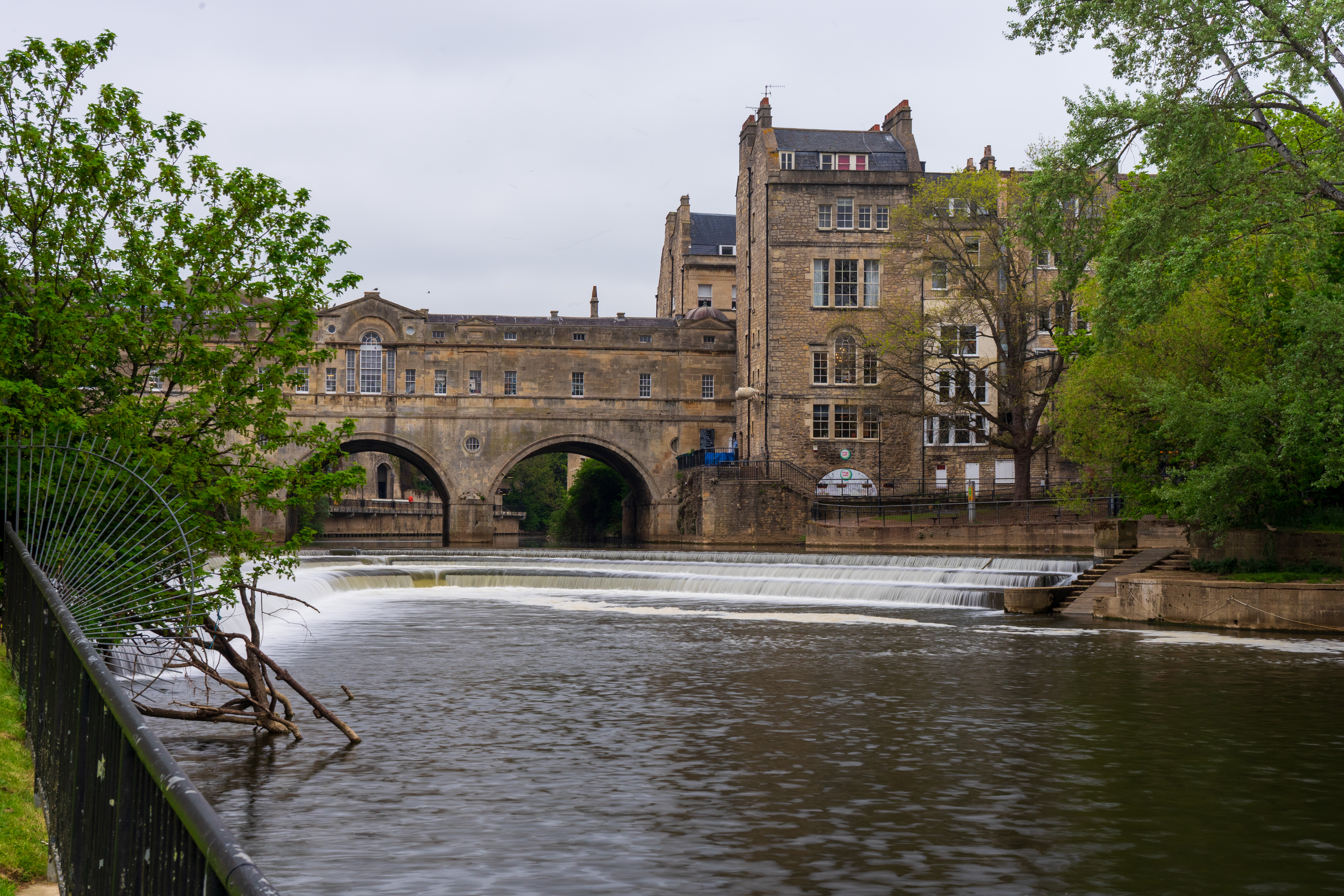
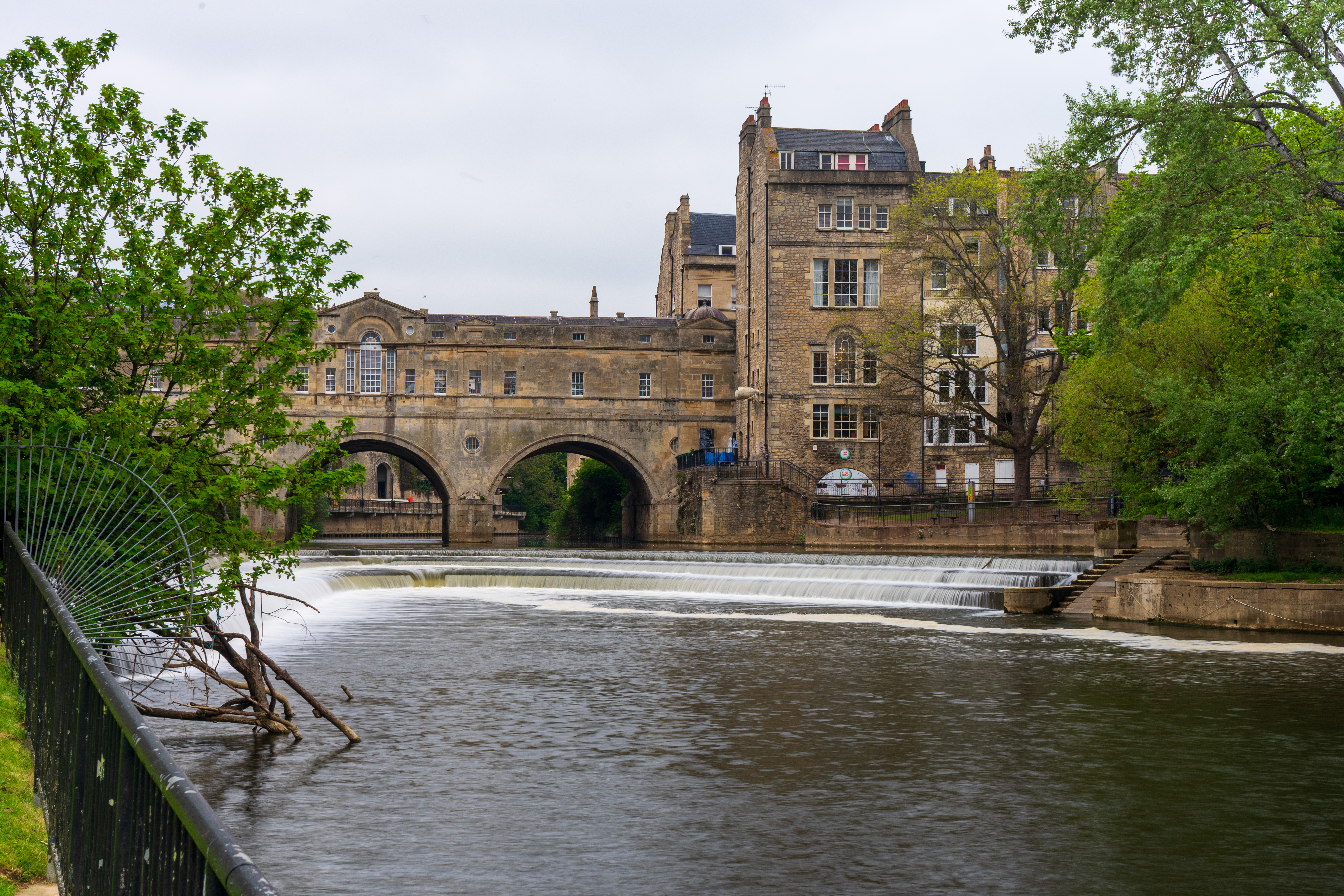
As a further test, I tried blurring people out of a busy street scene by Bath Abbey. Again, the longest available shutter speed wasn’t enough to give the effect I really wanted, as you’ll see from the following two shots. Even so, if you don’t need to stretch all the way to long exposures, the circular polarizer works well and the VND filter does a good job of slowing your shutter speeds or enabling wider apertures within reason, by as much as 5-stop effectiveness.

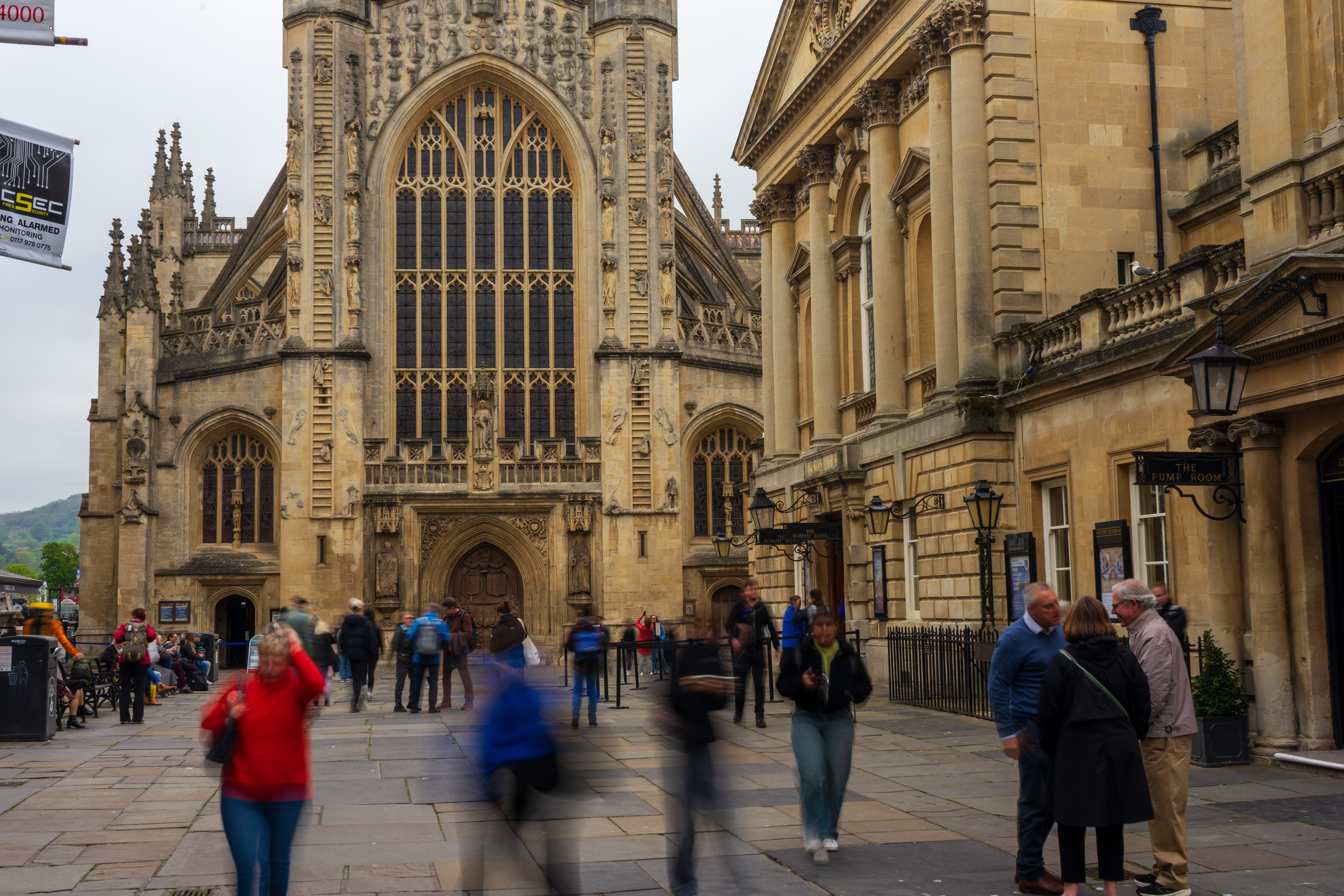
Neewer True Colors Filter: Verdict
I like the two-fold attraction of this filter, in that it’s both a variable neutral density filter and a circular polarizer, all wrapped up in one package. It’s nicely made and easy to use, with the caveat that the handle precludes the use of a lens hood. Even so, I particularly like that the handle can be used for adjusting the VND or the circular polarizer, simply by loosening or tightening it on its thread. I also like the hard stops for the VND, which avoids the plague of cross-polarization. I just wish there was a bit more stopping power on tap, to enable long exposures. To be fair though, that’s more within the remit of a different type of filter, like 10-stop ND filter.
Features ★★★★★ | The smart feature set includes dual variable density and circular polarizing effects, in one filter. |
Design ★★★★☆ | It’s a clever design that’s easy to use but you can’t use circular polarization without any neutral density reduction in light transmittance. |
Performance ★★★★☆ | It works well with minimum degradation of image quality in terms of sharpness, contrast and color rendition. |
Value ★★★★★ | I’d often expect to pay a similar amount for just a VND or just a CPL, so it’s great value, a bit like a BOGOF deal. |
Alternatives
The Neewer ND2-512 (1-9 Stops) HD True Colors Variable ND Filter combines a similar ND2-ND32 variable density filter but this time paired with a separate, magnetic ND32 neutral density filter instead of a built-in circular polarizer. What you lose in circular polarization, you gain in an extra 4 stops of light-stopping power. It’s available in sizes of 49mm to 82mm with prices ranging from $50 / £68 / AU$88 up to $60 / £95 / AU$111.
The Neewer ND2-32 True Colors Hard Stop Variable ND Filter is a variable neutral density filter pure and simple, without an additional ND filter nor a circular polarizer. It has a relatively limited range of usefulness but the ‘hard stops’ do at least avoid the risk of a dark X-shape in your images caused by cross-polarization. It’s available in sizes from 49mm to 82mm and costs from $44 / £44 / AU$60 to $53 / £70 / AU$120.
Matthew Richards is a photographer and journalist who has spent years using and reviewing all manner of photo gear. He is Digital Camera World's principal lens reviewer – and has tested more primes and zooms than most people have had hot dinners!
His expertise with equipment doesn’t end there, though. He is also an encyclopedia when it comes to all manner of cameras, camera holsters and bags, flashguns, tripods and heads, printers, papers and inks, and just about anything imaging-related.
In an earlier life he was a broadcast engineer at the BBC, as well as a former editor of PC Guide.
You must confirm your public display name before commenting
Please logout and then login again, you will then be prompted to enter your display name.
